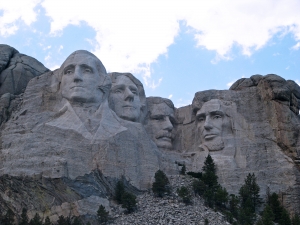Skip over navigation

Or search by topic
Number and algebra
Geometry and measure
Probability and statistics
Working mathematically
Advanced mathematics
For younger learners
The Lives of Presidents
Age 11 to 16
Challenge Level 





- Problem
- Student Solutions
There are lots of publicly available data sets that you can use to explore interesting statistical questions.
Take a look at this spreadsheet with data about Presidents of the United States of America.
It contains the year that each President came into office, their age at the time, and, if applicable, their age at death and how they died.
What interesting statistical questions could you explore?
Here are a couple to get you started:
Who do you think lived longer - Presidents who lived a long time ago, or more recent Presidents?
Were Presidents a long time ago older at the time of their inauguration than recent Presidents?
You'll need to decide what counts as "a long time ago" and "recent".
You might find it helpful to try sorting the spreadsheet by different criteria.
You might wish to work out some summary statistics, or draw suitable diagrams to represent the data.
Do your findings match your original hypothesis?
Can you come up with any explanations for what you've found?
You may wish to look up some additional data to explore other related questions. We'd love to hear about what you find out.
With thanks to Don Steward, whose ideas formed the basis of this problem.
Take a look at this spreadsheet with data about Presidents of the United States of America.
It contains the year that each President came into office, their age at the time, and, if applicable, their age at death and how they died.
What interesting statistical questions could you explore?

Here are a couple to get you started:
Who do you think lived longer - Presidents who lived a long time ago, or more recent Presidents?
Were Presidents a long time ago older at the time of their inauguration than recent Presidents?
You'll need to decide what counts as "a long time ago" and "recent".
You might find it helpful to try sorting the spreadsheet by different criteria.
You might wish to work out some summary statistics, or draw suitable diagrams to represent the data.
Do your findings match your original hypothesis?
Can you come up with any explanations for what you've found?
You may wish to look up some additional data to explore other related questions. We'd love to hear about what you find out.
With thanks to Don Steward, whose ideas formed the basis of this problem.
You may also like
Consecutive Numbers
An investigation involving adding and subtracting sets of consecutive numbers. Lots to find out, lots to explore.

